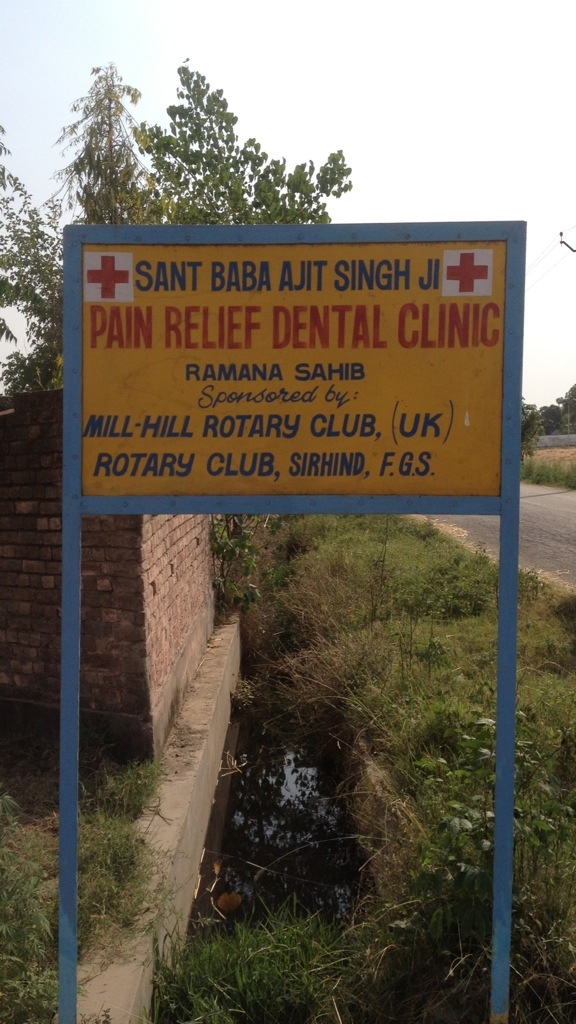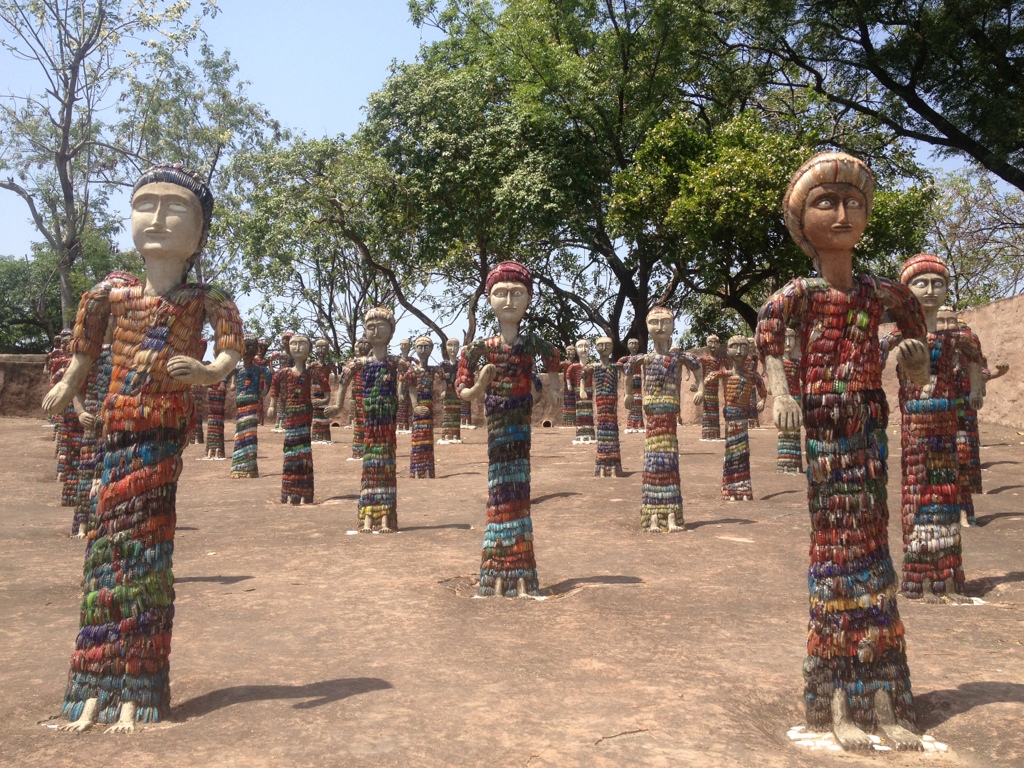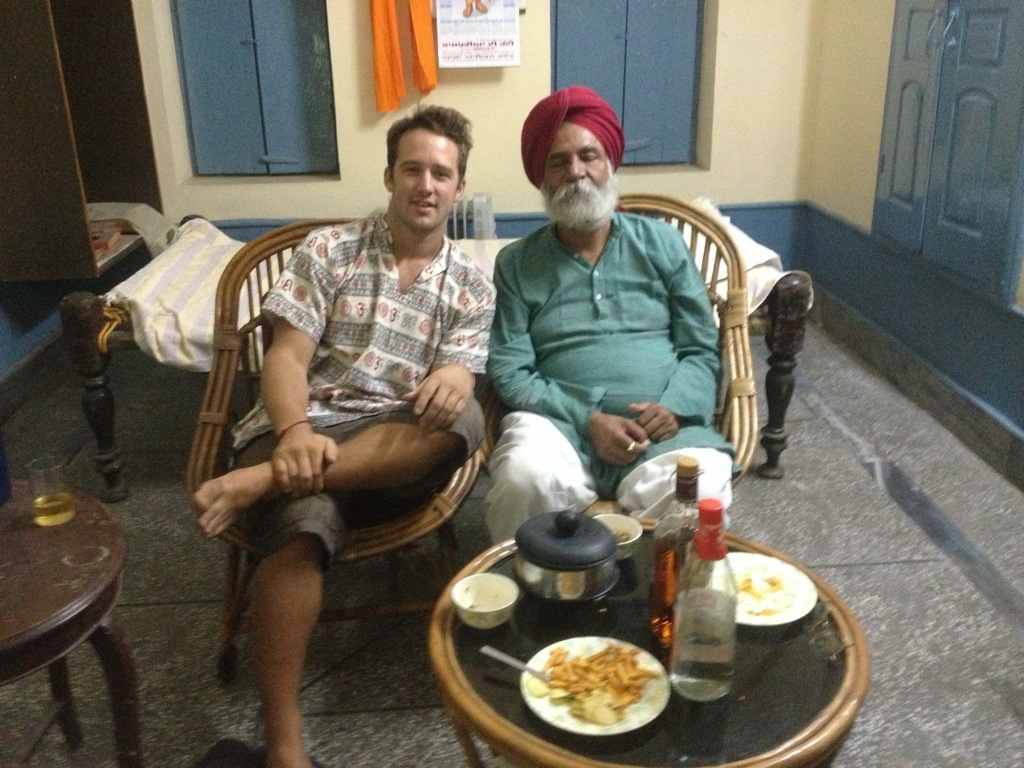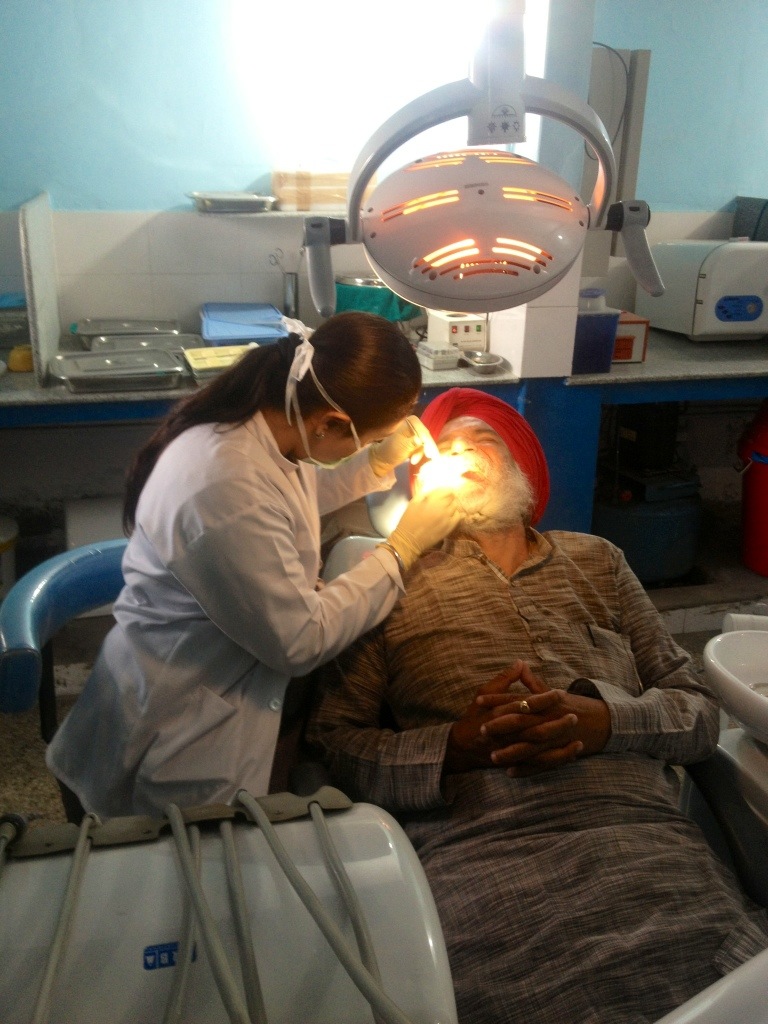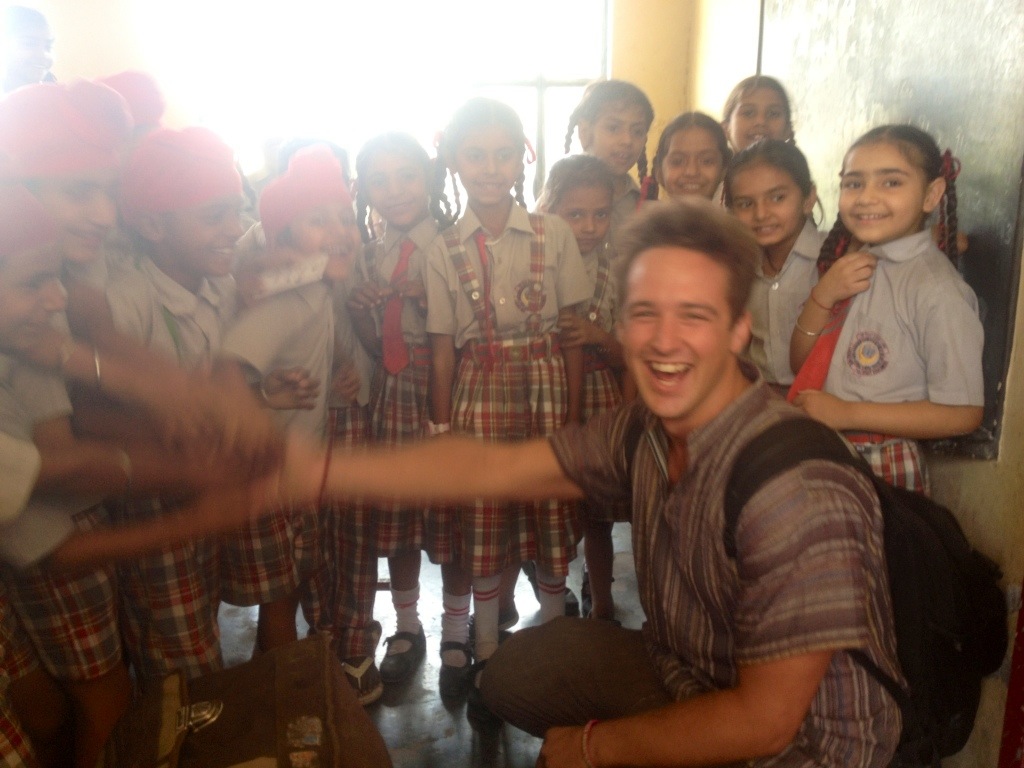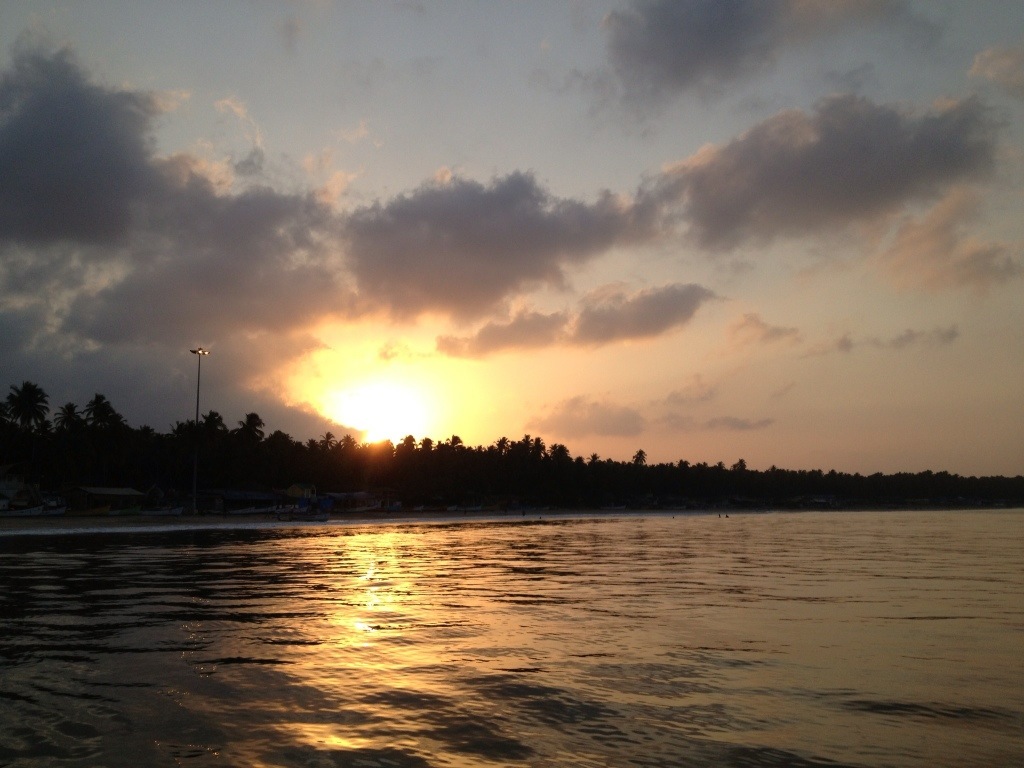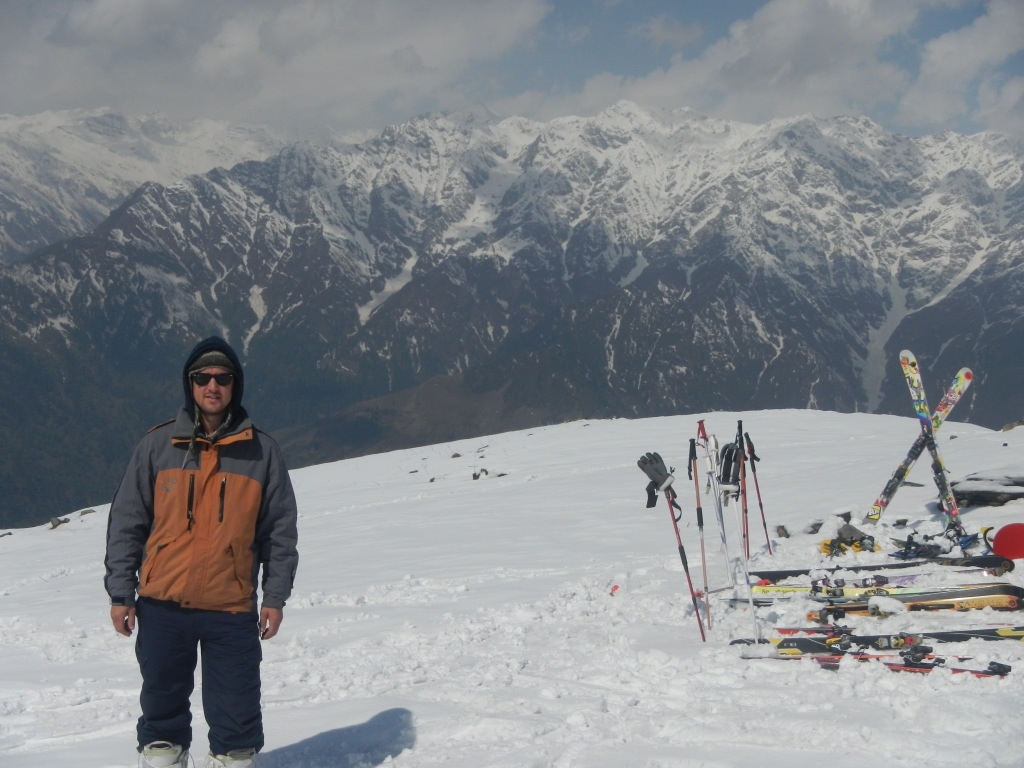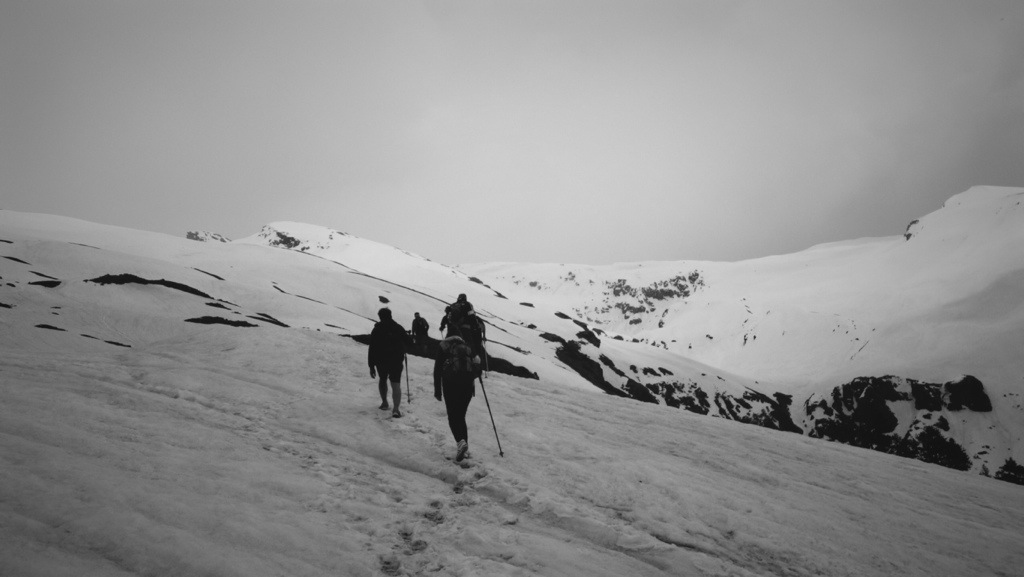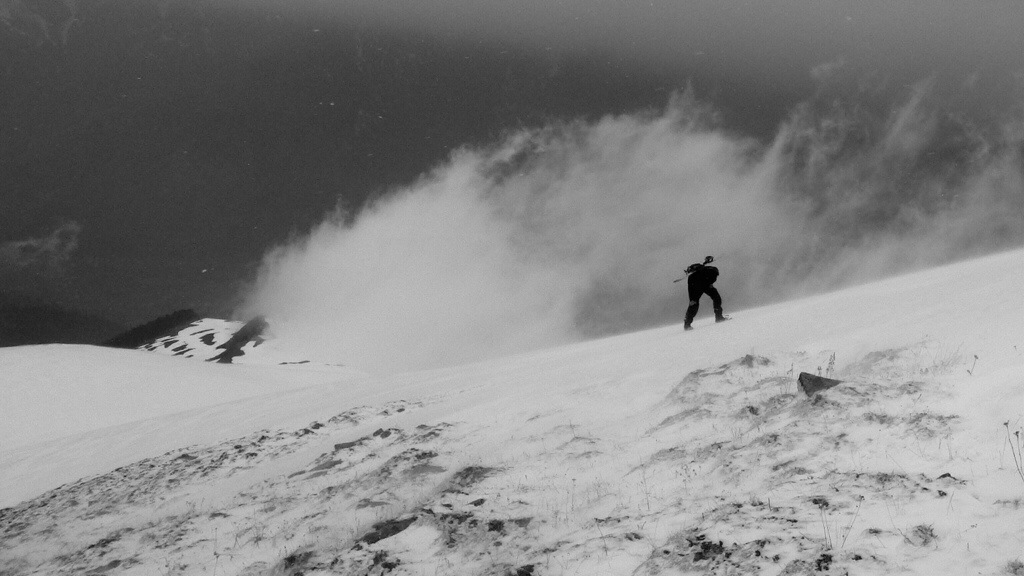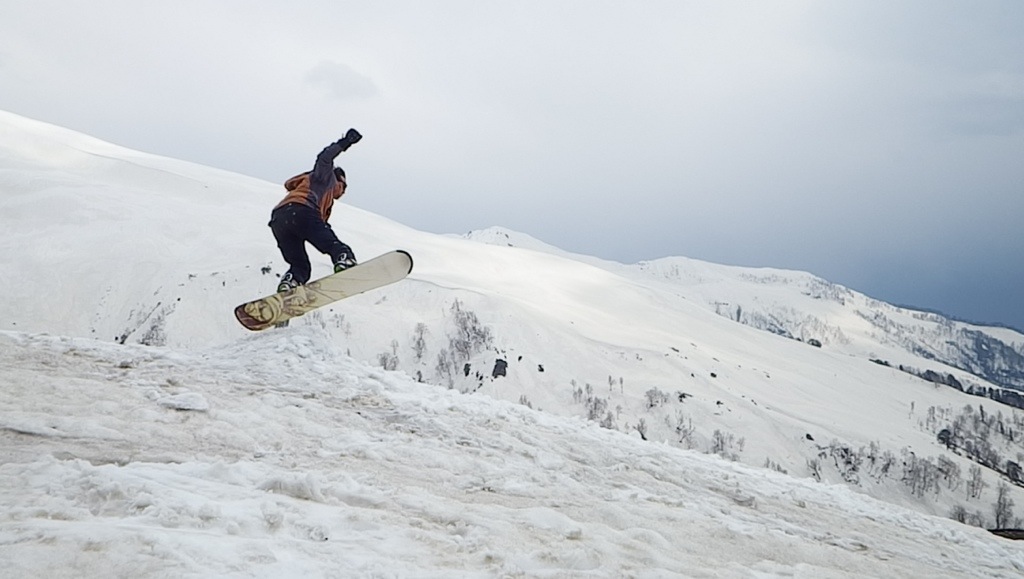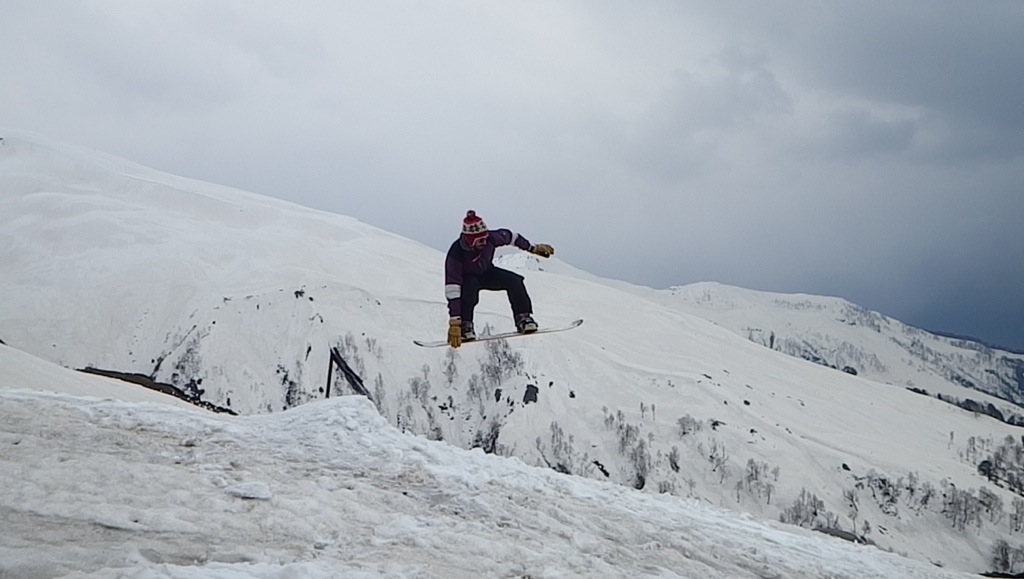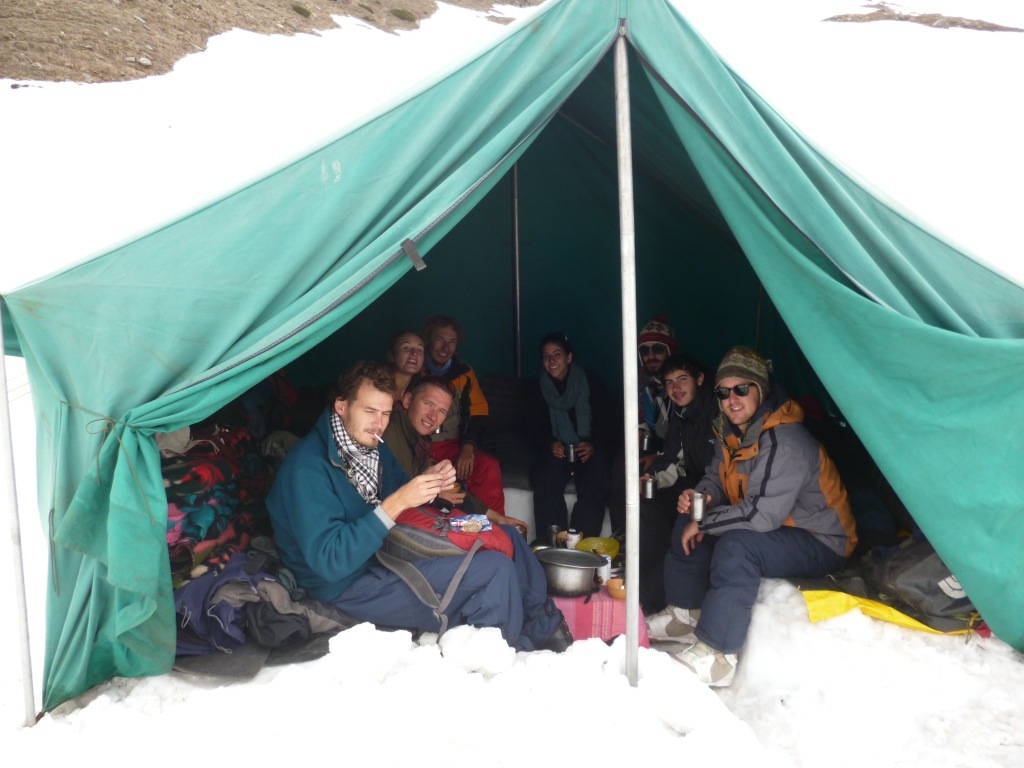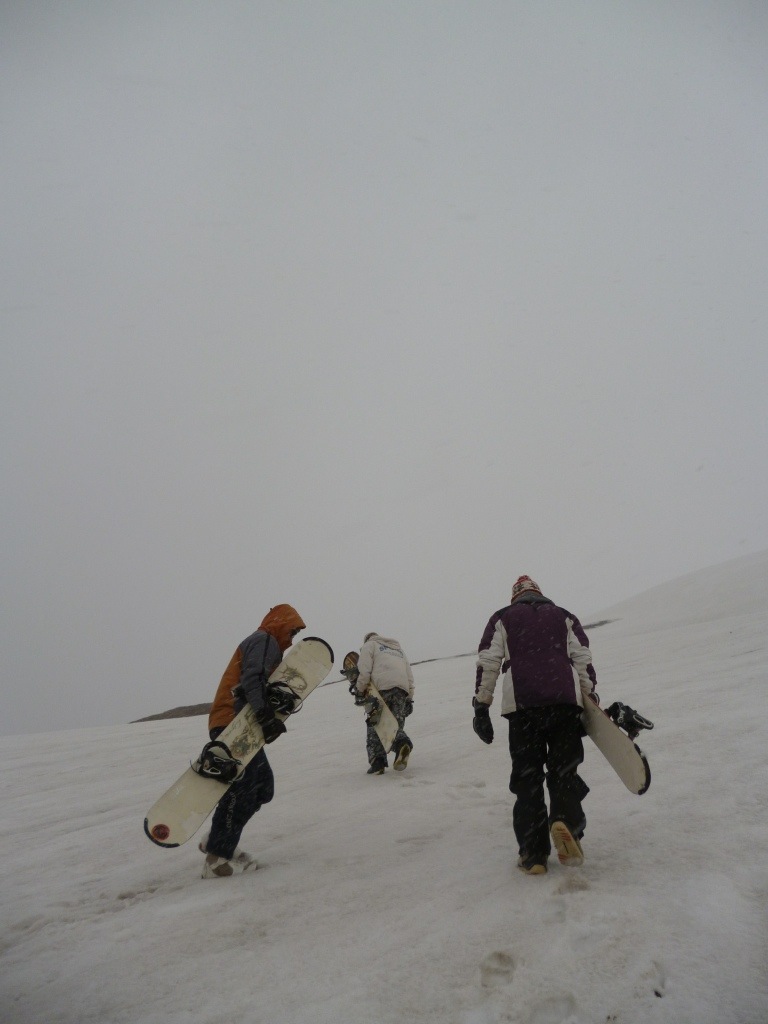Dharamsala, Manali & Shimla, Himachel Pradesch
Dharamsala, or more specifically McLeod Ganj, is the home of the 14th Dalai Lama, the Tibetan government in exile, a large Tibetan refugee population and hundreds of street vendors selling “momos”, little rice parcels filled with vegetables, fried in oil, and other Tibetan inspired fare.
The bus journey to Dharamsala winds up the foothills from Pathankot train station for about 5 hours. Then another bus serves the last 10km of even tighter bends up to McLeod Ganj.
The area is full of Tibetan Buddhist monks who travel here as pilgrims to hear the Dalai Lama teach, to debate and to visit the Buddhist temple outside the Dalai Lama’s residence. Unfortunately, when I arrive the Dalai Lama is away somewhere else in the state and will then fly off to USA to teach in various locations, meaning I won’t get to see him!
Nevertheless, the place is teeming with monks and there is one area where they all congregate to debate. Strangely, Buddhist debate is not quite as peaceful as you would expect. They stand in circles, shouting at each other at the top of their voices and clapping hard out in front of them once they feel they have made their point. And there are so many of them, at first hearing it sounds like a school playground. If only I could understand what they were saying!
Next stop, Manali. Further north and at a higher altitude to Dharamsala. Get ready for the cold!
The night minibus arrives in New Manali at around 6am and I take an Auto-Rickshaw up to Old Manali, about 5 minutes away on the River Beas.
The scenery is spectacular, surrounded by snow-capped mountains and forests, but after the 35°c heat of Amritsar, it’s unbearably cold! Luckily, all the shops sell the coolest socks I’ve ever seen, with a delegate big toe, so you can wear sandals or flip flops at the same time. Awesome.
I decided that I wanted to do some trekking and one of the adventure offices put me in touch with a German called Paul who is also looking for a group to do some trekking with. We get something to eat at Sunshine Cafe, the best restaurant in the whole of Manali, and decide to have a look around all the offices in the morning and decide upon our options.
We decide, after much deliberation, to join up with an Israeli couple, Amit and Adi, who want to do some snowboarding. But, by the morning we are leaving, there’s a group of 8 of us going including two Russians, Tony and Ruslan, a Frenchman called Benjamin, and a Belgian called Wiske (pronounced Whiskey).
The snowboarding trip was a lot of fun, although trekking for 5 hours to 4000m above sea level to snowboard for 10 minutes is not my idea of a good cost:benefit ratio. We had a couple of bottles of whiskey and spent both nights around a camp fire singing songs of our home countries, including the Nepalese cook and porters. The food also was very good, we never went hungry and we had something different to eat for every meal.
After 3 days and 2 nights, we packed up our things and hiked the hour long route back to the road and the awaiting minibus. It seems that the Nepalese porter wasn’t that used to these kinds of minibus rides on windy roads, and he decided to keep it to himself that he wasn’t feeling very well, before hurling up through my window and over my shoulder. Lovely.
Back in Manali, we all had dinner and drinks together at the Sunshine Cafe, including our snowboard guide Kishu, before Benjamin and I decided to join him for more drinks, to listen to Coke Studio (an MTV India production where they take people out of villages, take them to a recording studio and modernise their traditional songs), and to try on silly hats.
The next place I really wanted to visit was Rishikesh, the self-proclaimed world capital of yoga, something I’ve never done before. But it’s quite far, so I decided to stop in Shimla first.
Shimla was the British summer capital in the time of the Raj, and is situated on a ridge around 2200m above sea level. It contains a lot of British architecture as well as a huge white church and Hindu temple devoted to the monkey god Hanuman, and appropriately surrounded by aggressive rhesus macaques. Alongside Manali, it is one of the top tourism spots for Indians to visit during the summer and favourite honeymoon destination.
After a visit to the temple, at the top of a very steep hill, to see the huge 50 foot Hanuman statue, I decided to check out Wake & Bake, a cafe with a view over the valley which someone on Facebook told me to check out. Whilst inside, I am joined on the rooftop by Abhi, a 20 year old Indian who is studying to become and electrical engineer in Punjab. We get chatting, exchange numbers and decide to meet later.
When I call Abhi he comes to meet me with his two girl friends, which I find very odd because its unusual to see young unmarked mixed groups around. Abhi explains that Shimla is one of the only places in India where they would get away with it. They all seem like very well educated and liberal young people and they all speak impeccable English.
We go to get something to eat and Abhi insists on paying for us all. He explains that his full name in Hindi means ‘welcoming’ and that’s what he intends to do.
At about 6pm the girls have to leave, this is India after all, so we all have some photos together. Apparently, the style in India is to take photos at a jaunty angle for effect.
Once the girls have departed, Abhi and I go for a drink at a bar called Splash. It’s well off the beaten track and he says that no foreigners really go there. We order a couple of beers and soon I’m being convinced not to leave for Rishikesh in the morning but to get the bus to Solan, his home town, which is on the way to Chandigarh. A phone call with his mother, an English teacher at a school in Solan, confirms the arrangement and I agree to meet him the next day and travel to his hometown together.
We stay in the bar for an hour or so and mostly discuss politics and the fact that Abhi isn’t a proud Indian. I try to find out why and he says that all India has to be proud of is its culture. He outlines the things that he doesn’t like about India; the corruption, the way women are treated, the controlling nature of families, their negative opinion of the west… The list goes on. I want to argue with him but he’s clearly a very liberal-minded, forward-thinking, well-educated (is that enough hyphenated adjectives?) young Indian, and his mind is made up. I decide that I like him for this, and I feel a little less concerned about travelling 60km the next day to see someone I’ve only just met.
Shimla is a great place, if a little expensive. I’m looking forward to visiting Solan today, and it will also give me a chance to visit Yash and Usha in Chandigarh again, which will be great.
Posted from .
The Golden Temple, Amritsar
The highlight of my trip to India so far is the Golden Temple in Amritsar. This building, the holiest of Sikh temples, sits in the middle of a pool called the Amrit Sarovar, or Pool of Nectar, where the town gets its name from, and at night, particularly at full moon like the night I arrived, the vision is incredible.
Although the temple is an incredible sight, that is not why this place is such a highlight for me. The highlight comes, I think, from the nature of Sikhism.
At the Golden Temple everybody is welcome. Everybody is given somewhere to sleep for free. Everyone is fed as many times as they wish. No one wants or asks for any money. I haven’t felt so welcome anywhere as I have at the Golden Temple.
On the first night, I was sitting by the Pool of Nectar staring in amazement at the Temple, when two Sikh men approached me and the people I was with and started talking to us. Being in India for so long, you start to get wary of this kind of thing, expecting that it won’t be long before you’re asked to visit a shop or for some money. But these guys started chatting with us and told us that they would like to tell us about the Golden Temple (which, we were told, is as much our own temple as it is anybody else’s) and Sikhism.
The next hour or so was spent listening intently to these guys, finishing with picture taking and an offer to one of the girls that he would meet her at the train station the next day and give her sandwiches for her train journey.
The next evening we headed out to the Pakistan/India border to watch the closing of the border ceremony.
One part: Changing of the Guard
One part: Gladiators
Two parts: Ministry of Silly Walks
When these guys stand to attention, they kick so high they almost knock their ceremonial headdress off, and if that hasn’t done it, they slam their feet so hard into the floor, it falls off again. Each standing to attention movement was followed by a straightening of the hat movement.
This was all followed by lowering of the two flags in exact synchronisation, a sign that neither country is superior to the other (although the Indian crowd would beg to differ) and a mad rush back out to the taxis.
The food at the Golden Temple is basic, (dal, roti, vegetables, rice/curd and water) but it was free so, who’s complaining!
The idea is that, in exchange for the free food and board, all pilgrims help out in the kitchen washing up the hundreds of plates, bowls, cups and cutlery that come out of the dining room every 5 minutes. I decided to spend a couple of hours doing this and there was a great atmosphere. Everyone helps, as everyone is equal. So children, men, women, all with their heads covered, gather around the numerous large troughs of water that go from dirty to soap to clean, carrying out their duty of service to their fellow pilgrims.
Stepping inside the Golden Temple is like stepping into another universe. The beauty of the building isn’t even half the appeal. The atmosphere. The smiles from everyone, all of whom look equally smug for being lucky enough to be there. The enchanting music emanating from within the temple. The free food. The people offering hours and hours of their time in service to one another. As Dr Jaspreet Kaur, one of the dentists from the clinic in Hansali would email me to say some days later – “it is true that the Golden Temple is no less than any paradise” – I couldn’t have put it better myself.
Punjab has been the least touristic but most welcoming place I have been in India. Next is Himachal Pradesh, the foothills of the Himalayas.
Sikhism to Buddhism.
Lowlands to mountains.
35° in the sun to 5° in the snow.
Chandigarh & Dr Coonar’s Villages – Hansali & Hindupur, Punjab
Hansali is a village in rural Punjab, a northern state of India, half an hour’s drive from Chandigarh, with a population of around 200. The main, in fact only, industry in the village is agriculture. The population of Hansali spend half of the year planting, cultivating and harvesting wheat, until the rains begin in mid-June and the wheat is replaced with padi (rice).
Oddly, for a village of its size, it contains a school, a college, a gudwara (Sikh temple – one which plays host to up 20,000 worshippers on some of the major holy days, offering each and every person that visits a meal of dal, rice, roti and vegetables completely free of charge) and a dental ‘pain relief’ clinic. All of this is much to the thanks of a particular man (or ‘saint’), Babaji.
Babaji, meaning respected (-ji) wise man (baba-), resides at Hansali’s gudwara. He is said to be an enlightened man who is directly in touch with God himself but who, seemingly, does not identify with any particular religion. “God is God” I am told as I gaze around his room in the temple, the walls adorned with images of Shiva, Jesus, Guru Nanak and Islamic symbols, to name but a few. He has earned his status as a holy man as many miracles and prophecies have been performed throughout his life, starting when he was just a child and could recall people, places and specific details from his former life.
My first meeting with Babaji is on the morning I arrive in Hansali. I was taken to the gudwara by Dr Amit Handa, a dental practitioner working at the pain relief clinic, who had kindly brought be along with him from Chandigarh. I purchase a handkerchief from a stall outside the gudwara to cover my head, remove my shoes (both actions symbolic of humility in respect of Sikhism, where all people of all races, religions, castes and gender are considered absolutely equal) and enter the temple. We enter the prayer room, where the Sikh holy book, the Guru Granth Sahib, is covered in a shroud and passages are read out over loud speakers almost constantly throughout the day. Dr Handa, a Hindu, kneels before the shrine and I follow, thinking its rather odd that a Hindu and a Catholic are kneeling down to pray in a Sikh temple. We then go and get breakfast and join the other morning worshippers sitting on the floor eating, another sign of equality for all in the temple. We then go to visit Babaji, and I am led into a room where a line of people move through one door and out another (the first time I’ve seen Indians respecting the western rules of queuing!), moving past Babaji, touching his feet and making donations.
As soon as I see the rupee notes that are being collected by Babaji’s assistant my skeptical mind begins to question the entire affair. I wonder how much money he collects each day, let alone on particularly special occasions. Most of the people working in the temple I’m sure will be volunteers. Where does all this money go? My mind wander to a documentary I had seen some years back about people in America claiming to be Christian faith healers, with their mansions and helicopters. My questions and skepticism would soon be answered.
Rural India is somewhat different to the parts of India I had already come to love, just 3 weeks after landing at Mumbai’s Chhatrapati Shivaji international airport.
Mumbai was loud, brash and colourful (particularly as I’d arrived on the eve of Holi, the Hindu festival of paint throwing!), Delhi had been louder and, to some extent, the India I had been warned about, Agra, home of the Taj Mahal, was the tourist trap the guide books had said it would be, and the sleepy beaches of Goa had been welcome relaxation after a week and a half’s relentless sight-seeing. My next stop would be Chandigarh, a city planned by Swiss-French architect Le Corbusier, in the north Indian state of Punjab.
I had been invited to Chandigarh by a friend of my Grandfather’s, Dr Hardev Singh Coonar, as a brief stop before heading to his native village of Hindupur, a few kilometres from Hansali. Dr Coonar’s brother- and sister-in-law, Yash and Usha, had kindly offered to put me up for an unlimited amount of time while I visited Chandigarh and the villages, and their incredible hospitality turned the ‘brief stop’ into a four-night luxurious stay. I was doted upon, fed to bursting point and thoroughly well watered with Kingfisher beer and Old Monk rum! My first of many experiences of the famous Indian hospitality. After seeing the sights of Chandigarh (the government buildings, university, research hospital, rose garden and ‘Nick Chan’s Rock Garden’, to name but a few) in an extremely lazy fashion, and spending a fair amount of time in Yash’s golf club bar (Chandigarh golf club, which is twinned with Arkley golf club), I decided it was time to move on to the village.
The purpose of Dr Coonar’s invite was for me to experience rural India and to visit the dental clinic. Dr Coonar, a retired dentist, and his elder brother Dr Pritam Singh Coonar, who sadly passed away in October 2012, had been instrumental in setting up the village dental clinic with the help of funding from Mill Hill Rotary Club, Rotary Club Sirhind, and Babaji. Whilst Dr Coonar himself would not be in India at the time of my visit, he explained that his nephew, Dr Harpreet Singh Sandhu, was staying at the family home and would look after me while I visited.
For more information about Dr Pritam Singh Coonar and the legacy he has left for the people in this rural part of Punjab, please have a read of this article.
I was taken to the clinic from the gudwara by Dr Handa and met the staff there. There are 4 dentistry stations in the clinic, 4 dentists including Dr Handa, and a queue of 45 people waiting outside; a slightly above-average queue but just about normal for a Sunday, I am told.
Soon, Dr Sandhu arrives and I am whisked away to a local Catholic Church where a Sunday school for all ages is taking place and the children are completing a quiz on their knowledge of the book of Acts. “Easy!” I think, having completed 13 years of education in Catholic schools, and I ask for an English translation of the quiz.
Q: Of what age was the cripple, healed by Peter and John at the temple gate?
a. 28 years old
b. 35 years old
c. Over forty years old
d. 50 years old
Q. Among the seven chosen to wait on tables there was one from Antioch, a convert to Judaism. What was his name?
a. Stephen
b. Nicolas
c. Nicanor
d. Timon
Never mind that then!
By this time the midday summer sun is beating down and it’s time for lunch followed by a 5 hour siesta, something I have discovered is very popular amongst the middle class, retirees of India. Lunch is, as usual roti, rice, dal and vegetables. And is, as usual, delicious.
Once the sun begins to dip below the horizon, we venture out into the village to meet some people. People, particularly young children, are very interested to see the gora (white man) in the village, and Dr Sandhu explains to each of them in Punjabi that I’m from London (“Proper London?”) and that I’m an engineer (as I’ve grown tired of trying to explain what a ‘Quantity Surveyor’ is, even to westerners), and I receive a lot of handshakes, bows and hands on shoulders in return. Dr Sandhu and I then spend the evening practicing two of India’s most beloved pastimes; drinking whiskey and watching cricket.
The next day I visit the primary and middle school in Hindupur where the children are gathered for their Monday morning assembly. This involves a lot of singing, including the national anthem, and reciting of letters, colours, days of the week, all in Punjabi and English, and a few different songs.
I am returned to the dental clinic the next day and explained in a bit more detail how it all works. Dr Coonar’s family, currently represented by Dr Sandhu, run the clinic from a management point of view. It is funded, as mentioned previously by a number of bodies and also in the form of voluntary donations by anybody who receives treatment at the clinic. On an average day the clinic will see between 30 and 40 patients, but it is not unknown for upwards of 60 patients to turn up. Hard work for a team of only 4 dentists in an area where dental hygiene is placed low on the list of priorities for families that, in general, live below the poverty line.
But the dentists seem to love their work. The passion that people have for one another in India is outstanding.
Once the clinic has seen all the patients, at about 1:30, a particularly quiet day, we walk back up to the gudwara for lunch, with a quick stop at another Babaji project on the way; the school.
Hansali school takes students from class 1 through to class 12, with double form entry in each year: a capacity of almost 1000 students. Buses are provided, delivering children to and from other villages in the region. On the walls of the courtyard are displayed enigmatic slogans in Punjabi and English, the daily reading from the Sikh holy book is written on a chalk board, the top 5 daily newspaper headlines on another. The head teacher kindly offers to show me around from the youngest classes to the oldest, and I experience a Dulux colour chart of reactions: from silent bewilderment, through screaming excitement, all the way to nonchalant ambivalence.
After another free meal at the gudwara, I am granted a private audience with Babaji and I am given the opportunity to ask questions of his assistant, who has devoted his life to Babaji and lives with him in the temple, but had once been a marine engineer in the Indian navy, and speaks fluent English. I am told the story of how Babaji came to be Babaji and I ask about the money.
The money, in its entirety, goes toward the supply of food in the gudwara; food that never runs short, even on the days when 20,000 pilgrims visit, and for the running and upkeep of what is, in all honesty, a fairly modest temple. This of course includes some required to keep Babaji, his assistant and various other full time workers in the temple going, although they all devote their lives there and essentially take a vow of poverty.
The remainder of the donations, I am told, are donated, in their entirety, to community projects. The dental clinic. The school. A wedding for a village family that cannot afford one. Transport for people who cannot get around otherwise. I am also told that if supplies are donated, such as a bar of soap for instance, it is recorded in detail when it is used and how long it lasts to ensure that nothing untoward is happening with donations.
I am given a gift as I leave; a large orange cloth, a symbol of spirituality, and a bag of “holy food”, blessed almonds. I am never asked for any kind of donation, nor do I feel that one is expected from me, a strange feeling having spent a month in India, and it makes me feel more inclined to give one.
I read a worrying thing in the Times of India that weekend, following the Boston bombings. A Sikh leader in America had made a statement, as a matter of course when these things occur, as an attempt to divert suspicion from American Sikhs. I read that Sikh men are often targeted in the fallout of these incidents due to their “conspicuous appearance” of a kesha (uncut beard and hair) and turban.
So far in my experience of India, a country which seems to be based upon basic principles of love and respect for one another, Sikh’s have been the most hospitable, friendly and kind that I have met. The founding principle of Sikhism, that all men, women and children are equal, is something we could all learn a lot from and do well to follow in our own lives. If only people in the west were more educated when it comes to these types of traditions and religions, I think the world (and the west, in particular) would be a more welcoming and accepting place for everybody. The fact that some uneducated westerners will mindlessly single out a man wearing a turban and connect them with terrorism without any evidence is shocking and saddening.
Dr Handa and I decide to head back to Chandigarh and Babaji’s assistant offers to provide a driver to drop us home, which we gratefully accept.
I am treated to one more night with Uncle Yash and Auntie Usha before I depart for Amritsar, the home of the Golden Temple, in the morning.
I am about to see the real beauty of Sikhism. So far, the surface has only been scratched.
Posted from .
‘The Alchemist’ by Paulo Coelho
It was the pure Language of the World. It required no explanation, just as the universe needs none as it travels through endless time. What the boy felt at that moment was that he was in the presence of the only woman in his life, and that, with no need for words, she recognized the same thing. He was more certain of it than of anything in the world. He had been told by his parents and grandparents that he must fall in love and really know a person before becoming committed. But maybe people who felt that way had never learned the universal language. Because, when you know that language, it’s easy to understand that someone in the world awaits you, whether it’s in the middle of the desert or in some great city. And when two such people encounter each other, and their eyes meet, the past and the future become unimportant. There is only that moment, and the incredible certainty that everything under the sun has been written by one hand only. It is the hand that evokes love, and creates a twin soul for every person in the world. Without such love, one’s dreams would have no meaning.
Trekking and Snowboarding 4000m above sea level in the Himalaya
Two Russians, two Israelis, a Frenchman, a Belgian, a German, and I climbed a mountain to do some snowboarding and spend 2 nights camping at 3500m above sea level in the Himalayas.

